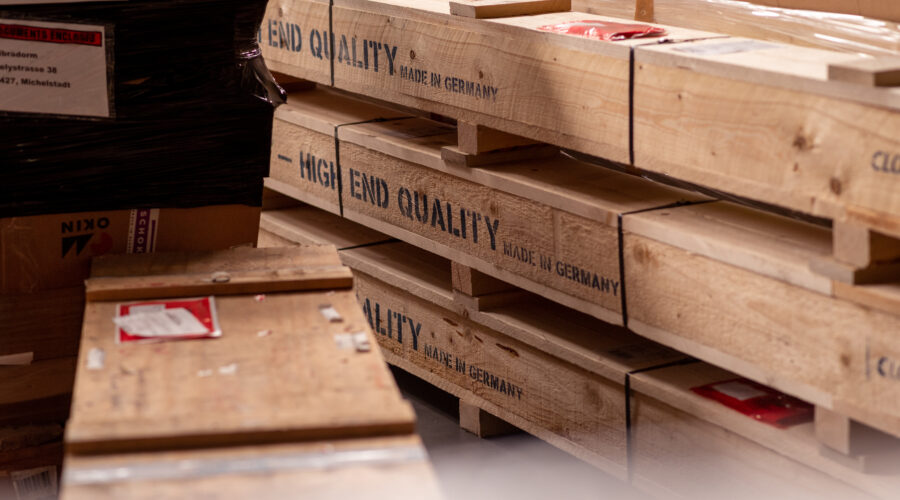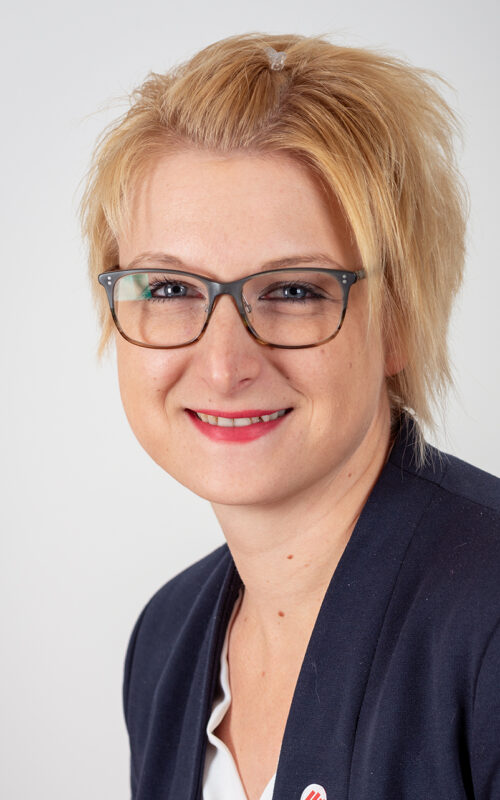2023 was not only an exciting year for us, but also a really special one - we celebrated our 30th anniversary and a number of highlights. CTL started in 1993 with 14 freight forwarders and has developed into one of the largest general cargo cooperations in Germany. Our network now includes 190 partners and we have a total of six optimally located sites where we handle up to 18,000 packages per night. This is what has characterised CTL since day one: We are constantly evolving, adapting to current challenges and are open to new ideas - this was particularly reflected in our anniversary year, in which we exhibited at the transport logistic trade fair in Munich for the first time, reached a new milestone in terms of partner density, completed our top management team and were able to push ahead with topics such as the internationalisation of the network and product expansion.
The continued growth and positive development of the CTL partner companies culminated in the commissioning of a new CTL handling location in Düsseldorf, after the Leipzig location was only implemented in autumn of the previous year. The new location replaced the previous Regional Hub West in Bottrop, which was previously operated by network partner Rottbeck Spedition.
The primary goals were to achieve a noticeable expansion of capacities for the network as well as to permanently strengthen the stability of the general cargo cooperation: "With the new West-HUB, we offer our partners in a challenging region the greatest possible flexibility in order to be able to react optimally to order peaks," explained Francesco De Lauso, CTL board member. Within five months, the entire infrastructure was set up, technical and procedural preparations were made and a staff was established. For in addition to 4,000 square metres of transhipment space in the Rhine metropolis, the expansion of the company's own local transport structures was also planned from the very beginning in order to handle general cargo transports independently.
Due to organic growth of our partners, who were able to gain additional customers and quantities or used CTL to a greater extent than in the past, as well as because of the COVID 19 pandemic, a positive network development was recorded overall. At the same time, this very growth formulated a high demand on the system: the quantities in the network must be produced at high quality despite the increase in volume.
In our medium-term planning, volume growth was forecast, but not at this pace. We felt the effect above all at our central HUB, which reached its load limit. Against the background of these volumes and further economic growth, we decided to bring forward the planned expansion and flexibilization of network capacities to autumn 2021 and to bring about an equalisation of consignment flows.
With the opening of the East-HUB, the sixth CTL location, we launched another production channel with our partners, thereby increasing their radius of action in the general cargo market. These options for action are predominantly achieved through flexible production options. Thus, our partners have the option, in combination with cost and quality optimisation, to optimally appear on the market. In addition, we save significantly on CO2, as the east-south/south-east shipments can be produced over much more direct routes via the East-HUB.
At the start of the year, a relatively simple sentence evolved into a vision which was to become very significant to us. The sentence ‘We are there where we are needed’ was the result of all elements which are important to us as CTL and which drive us. We want to guarantee a conscientious implementation of the high standards on the part of the market and partner landscape with the help of a stable and reliable operative basis. One component which supports this vision and transports it to the outside world is a brand which stands out by itself. Modern and easily recognisable, competent and forward-looking, reliable and collaborative. That’s just how we wanted to present ourselves, so we decided on an all-encompassing redesign of our corporate image.
The new image was intended to evoke curiosity in CTL. It was to help recognise why our business model is so important for medium-sized companies, right now and in future. No sooner said than done! Within four months, the idea of a modern and strong CTL brand was turned into a new world of colour and imagery and has been presented on the new CTL homepage since 1 August 2020. In the weeks and months to follow, all corporate divisions, CTL tools and properties will be gleaming in their new colours. What we are looking forward to most is the creative teamwork with our CTL partners.
On the occasion of the 25th anniversary of CTL, the setting of the Haydau convent in Morschen was chosen to honour the long-standing existence of the company. The festive event on the evening before the annual general meeting on 24 June 2018 was the perfect opportunity to remember the beginnings of CTL AG, to highlight the developments including all the challenges and successes and to drink to the continual and successful future of CTL AG. A musical entertainment programme rounded off the evening of celebrations.
Furthermore, at the main location in Homberg Efze, a new hall section with an overall length of 130 m, a rehandling area of 3,900 m² and 68 gate systems was put into operation in the anniversary year. This meant that throughout the overall handling space of the hall of 12,000 m², possibilities and capacities for processing up to 1,700 tonnes of goods were created.
In the course of the constantly growing trend of online shopping by private persons, CTL developed the product CTL Private in the year 2014. However the quantities were disproportionate to time and costs, so the product couldn’t maintain itself. A second level in a Homberg hall section reminds us of the time when parcels were processed there with the help of a sorting system and a conveyor belt.
In order to guarantee optimum transparency in the flow of goods, CTL introduced a video scan and tracking system at all its own operations.
The fifth handling terminal, in Bottrop in a rented part of a hall of our partner Spedition Rottbeck GmbH, was gladly put into operation on 1 September 2010. Furthermore, CTL followed the principle of ‘green logistics’ and installed solar panels on the roofs of their own handling terminals Lauenau, Grolsheim, Aurach and Homberg.
The web-based intranet for all CTL system partners (www.ctl-partner.net) has been the key foundation of seamless communication and information flow to this day.
In September 2008 the newly built regional rehandling terminal Grolsheim was brought to life. The year was also characterised by the reorientation of data communication in which the integration of a data converter on a central information platform was implemented. The data communication between the CTL headquarters and the partners has since been carried out exclusively via the so-called BIC-Client <-> BIC-Server connection and therefore ensures optimum data security and efficiency.
With the completion of the RUP in Lauenau on 1 July 2007, our own CTL depot was also installed on site and has since covered the Greater Hanover area for the CTL cooperation. This consistent as well as successful further development was experienced by the intelligent consignment management at the HUBs in terms of load optimisation, the development of international transportation through existing rehandling operations and ultimately the blanket coverage and concentration of the network. The financial crisis also had an impact on CTL with a strong decline in quantities. New work processes were introduced with new services for the partners and a changeover to electronic invoicing.
In the year 2006 the construction of the regional handling terminal in Aurach was completed, moved into and put into operation on 1 September 2006. In addition, the introduction of realtime scanning at the recipient partners in Germany took place. In the second half of the year, a local transportation tariff on the basis of kilometres from depot location was introduced for the Netherlands, Belgium, Austria and Switzerland. Furthermore, an internal loading space exchange for CTL partners was created.
The products CTL Express, CTL XXL, CTL Global, CTL dangerous goods (formerly CTL Explosive) and CTL Sublot were developed from 2002 and established on the market. This involved new challenges which required unusual approaches to solutions. For example the hall was extended with a tent to coordinate the handling process of Express goods in the yard in advance. These extensive developments were reflected in quality certifications and the internal changeover to a professional floor conveyor system, a conveyor and sorting system for part-load consignments and, not least, investment in digitisation. Wireless and seamless scanning without stationary computer was introduced and contributed to the speed and optimisation of handling processes.
The administration building at the system headquarters in Homburg was extended by one floor and an additional 600 m² hall was built as so-called empties hall. The southern RUB moved from Feuchtwangen to Crailsheim at the start of 2003.
2001 Organisational processes and growing flexibility demanded a change in the corporate structure. CTL Speditionsgesellschaft mbH became today’s CTL Cargo Trans Logistik AG, which was able to record around 40 CTL partners in the network to that point. In the same year, the RUP in Gelsenkirchen was put into operation. In addition, the modernisation of the CTL computer centre was carried out by the company Thalmaier in Willebadessen. This teamwork laid the foundation of a future-orientated IT and, not least, a fundamental and trusting cooperation.
The development of a groupage network was accompanied by the ideal location in Homberg Efze, in the middle of Germany. The focus of CTL shifted to the handling of packaged goods and sublot loads. The expansion of the main handling operation (HUB) and the system headquarters in Homberg/Efze was realised. At the same time, the construction of regional handling sites (RUP) in Feuchtwangen and Hanover was decided. The RUPs were designed to decentralise the flow of goods in the CTL system and in order to optimise them for economic and ecological reasons.
1993 Founded as Cargo Trans Logistik Speditionsgesellschaft mbH, CTL dedicated itself to the coordination of direct transportation in the packaged goods and sublot sector. In the years to follow, the HUB system developed from the idea of dividing areas in Germany between cooperating forwarders, handling consignments at a terminal and operating one’s own area with the partners’ consignments.

















































